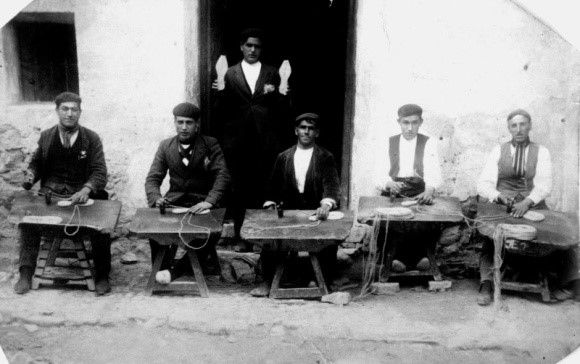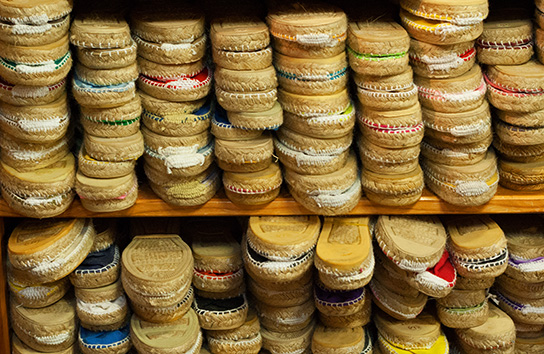You may swear by them or recently discovered them this Summer, but shortly it will be time to put them away for next year. I have a couple of pairs, and I just love them. They are so simple yet so versatile in style. The espadrille has been around for centuries maybe even thousands of years. The Archaeological museum of Granada owns a pair of espadrilles that were found on human remains inside the “cueva de los murcielagos” (the bat-cave). It is estimated that these shoes are around 4000 years old. Clearly, they are a very primitive version of today’s 'alpargatas'.

This light sandal, as we know it today, made with jute rope or braided hemp and with linen fabric, originates from Spain, where, already, they were being worn around the XIII century by the King of Aragons’ infantrymen. Its name is derived from “esparto” which is a kind of plant that was originally burned then braided to make the soles. The town of Cervera del Rio Alhama in La Rioja is considered the birthplace of Espadrille manufacturing.
 It was during the XIII century that the production of these shoes truly spread. Since it is a handcrafted shoe, making the treads employs many workers. The alpargatero’s (or Espadrille maker) only job was to make the rope soles, while the seamstresses sewed the fabric and the band. At the beginning of the XIX century, Mauléon (a French city located in the Atlantic Pyrenees) began selling them in vast quantities. The first people to wear them were the catalano-aragonese military soldiers then subsequently by the priests. Around 1880, most espadrilles were sold to mine workers, but they were also exported to South America. It was the time of the “hirondelles”, which were young girls from the aragonese valleys who came to work in the espadrille factories between the fall and winter seasons.
It was during the XIII century that the production of these shoes truly spread. Since it is a handcrafted shoe, making the treads employs many workers. The alpargatero’s (or Espadrille maker) only job was to make the rope soles, while the seamstresses sewed the fabric and the band. At the beginning of the XIX century, Mauléon (a French city located in the Atlantic Pyrenees) began selling them in vast quantities. The first people to wear them were the catalano-aragonese military soldiers then subsequently by the priests. Around 1880, most espadrilles were sold to mine workers, but they were also exported to South America. It was the time of the “hirondelles”, which were young girls from the aragonese valleys who came to work in the espadrille factories between the fall and winter seasons.


Around 1950, fashion evolved and this forced alpargata makers to reinvent the shoe with a more sophisticated design that was better suited to the times. This contributed, during the 1960s, to a special order of shoes for the Parisian festivities by the most celebrated designer of the time, Mr. Yves St-Laurent. He asked for an espadrille with a heel, which had never been done before. Suddenly, it was all the rage! Today, almost all the women who live in the southern regions have a pair of alpargatas with heels and ribbons that tie around the ankle.
Today, espadrilles are still extremely popular both in France and in Spain, especially in the summer. People seemed to like it because of the sole, which is 100% natural, molds itself to the shape of the foot, and allows the skin to breathe. The simplicity of this shoe makes it very versatile and therefore easy to match with all sorts of different styles. If the espadrille has already been around for 4000 years then it’s not about to go out of fashion now!!